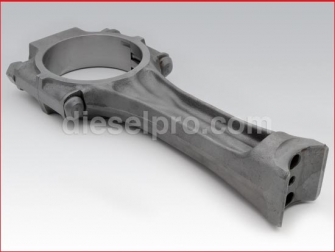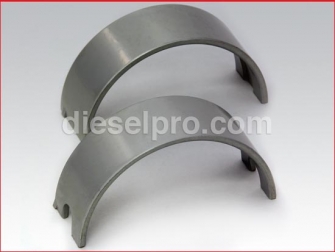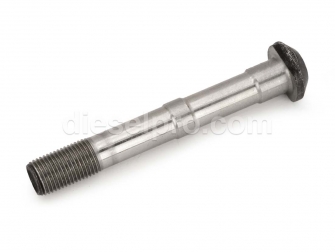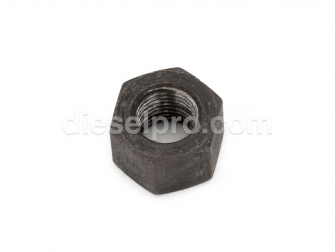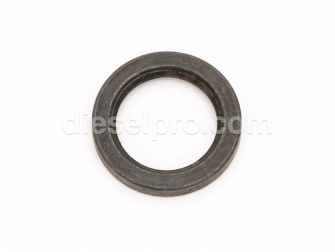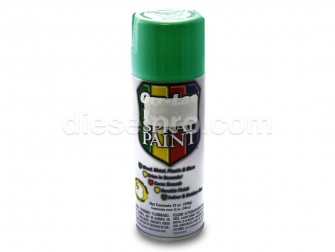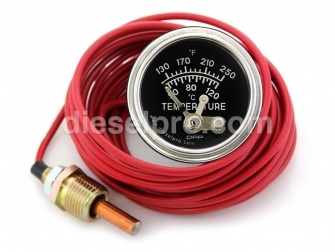Parts For Detroit Diesel 12V149 Turbo for Australia - Connecting Rod Section
 Loading...
Loading... Detroit Diesel 12V149 Turbo Parts – Connecting Rod Section
The Detroit Diesel 12V149 Turbo engine stands as one of the most advanced and robust members of the legendary 149-series family. Designed to meet the demands of continuous, high-output operation, this 12-cylinder, two-stroke V engine powers a wide range of marine and industrial applications—from offshore vessels and tugboats to generator sets and heavy-duty machinery. Turbocharging enhances its airflow and combustion efficiency, producing exceptional horsepower and torque while maintaining remarkable fuel economy for its size.
Within this powerful configuration, the connecting rod assembly plays a central role. Serving as the mechanical link between the piston and the crankshaft, the connecting rod converts reciprocating piston motion into smooth rotary motion, allowing combustion energy to be harnessed as mechanical power. Because the 12V149 Turbo operates under elevated combustion pressures and sustained thermal loads, the integrity of its connecting rods and associated components is vital for performance and longevity.
This catalog section provides detailed descriptions and practical information on connecting rods, bearing shell sets, bolts, nuts, and spacers for the Detroit Diesel 12V149 Turbo engine. It covers how each part functions, how to identify wear, and when to replace components to maintain factory-level efficiency and reliability.
Connecting Rod Overview
The connecting rod in the 12V149 Turbo engine is a precision-forged steel component engineered to withstand the intense cyclic loads created during each power stroke. Twelve connecting rods—one per cylinder—operate under constant stress as they transfer explosive energy from combustion to the crankshaft.
The 149-series engines, including the 12V149 Turbo, are known for their two-piece piston design—a configuration that separates the piston crown from the skirt for better cooling and easier maintenance. This design is particularly advantageous in turbocharged engines, where combustion temperatures soar beyond those of naturally aspirated counterparts.
Key Features of the 12V149 Connecting Rod
-
Forged from high-strength alloy steel for superior durability under load.
-
Precision-machined to exact tolerances for consistent bearing alignment.
-
Weight-balanced to OEM Detroit Diesel specifications for smooth operation.
-
Designed specifically for two-piece piston assemblies.
-
Rebuilt units are fully inspected, magnaflux-tested, and resized to factory dimensions.
-
Sold with refundable core deposits, promoting sustainable rebuild practices.
Benefits of a Properly Rebuilt Connecting Rod
-
Ensures precise piston movement and crankshaft alignment.
-
Reduces vibration, bearing wear, and piston slap.
-
Enhances overall engine balance and minimizes mechanical noise.
-
Extends crankshaft and lower-end component lifespan.
Signs You May Need to Replace or Rebuild the Connecting Rod
The connecting rod operates deep within the engine’s powertrain, and even minor wear can lead to catastrophic damage if undetected. Watch for these signs:
-
Engine Knock – A rhythmic knocking or “rod knock” often indicates bearing clearance issues.
-
Metal in Oil – Metallic shavings or particles found during oil sampling may originate from rod bearings.
-
Low or Fluctuating Oil Pressure – Can be caused by worn rod bearings or crankshaft journals.
-
Uneven Compression or Power Loss – May result from bent rods or improper bearing alignment.
-
Excessive Vibration – Imbalance between rods or uneven bearing clearances can create harmonic stress.
During every overhaul or major in-frame service, rods should be measured for roundness, straightness, and bore diameter. Any deviation from standard specifications warrants replacement or professional reconditioning.
Connecting Rod Assembly for Detroit Diesel 12V149 Turbo
Description
The connecting rod assembly for the Detroit Diesel 12V149 Turbo is built to handle the high torque and combustion forces typical of this engine. Each rod is individually balanced and machined for precise alignment and performance consistency. Diesel Pro Power’s rebuilt rods undergo a rigorous quality process that includes inspection, alignment verification, and load testing to ensure each component performs like new.
Applications
-
Compatible with 8V149, 12V149, and 16V149 engines.
-
Ideal for marine propulsion, industrial power units, and stationary generator applications.
-
Designed for engines utilizing two-piece piston configurations.
Why It Matters
Balanced connecting rods ensure:
-
Even combustion pressure across all cylinders.
-
Reduced vibration and stress on the crankshaft.
-
Consistent compression and improved power output.
Replacing all rods during an overhaul promotes uniformity and prolongs engine service life.
Bearing Shell Set – Connecting Rod Standard
Description
The bearing shell set is the critical interface between the connecting rod and the crankshaft journal. It enables smooth rotation and prevents direct metal-to-metal contact through a stable oil film barrier.
Construction and Function
-
Composed of tri-metal alloy layers (steel backing, copper-lead intermediate layer, and soft overlay).
-
Engineered to provide cushioning under high loads and maintain even oil distribution.
-
Designed to handle the continuous thermal cycling and pressure of turbocharged two-stroke operation.
Signs of Wear or Damage
-
Drop or fluctuation in oil pressure readings.
-
Metallic residue in filters or sump oil.
-
Knocking noise during idle or acceleration.
-
Scoring, pitting, or discoloration on bearing surfaces.
Maintenance Notes
Always replace the bearing shell set:
-
During major overhauls.
-
Whenever the crankshaft is reground or polished.
-
When oil analysis shows metal contamination.
Proper bearing maintenance is crucial to protect both the connecting rod and crankshaft surfaces, preserving oil film integrity and preventing premature engine failure.
Connecting Rod Bolt
Description
Connecting rod bolts fasten the rod cap to the rod body, securing the bearing shells around the crankshaft journal. They endure extreme tensile and shear forces during every power cycle.
Function
-
Maintains clamping force to prevent cap separation.
-
Ensures bearing crush and oil clearance consistency.
-
Prevents mechanical failure under continuous vibration.
Replacement Guidelines
-
Always replace rod bolts during rebuilds or bearing service.
-
Inspect for stretch, pitting, or thread wear before reassembly.
-
Use a calibrated torque wrench to tighten in multiple stages.
-
Avoid reusing bolts that have reached their yield point.
Proper fastener integrity is essential for maintaining the rod’s structural strength and alignment.
Connecting Rod Nut
Description
The connecting rod nut complements the bolt to form the secure clamping assembly that joins the rod and cap. It must hold torque under thermal cycling and vibration without loosening.
Key Recommendations
-
Always install new nuts when replacing rod bolts.
-
Apply torque lubricant to ensure accurate preload.
-
Follow torque and angle specifications exactly.
-
Replace any nut showing deformation, corrosion, or thread damage.
Connecting Rod Spacer
Description
Connecting rod spacers maintain proper side clearance between rods that share the same crankshaft journal. This ensures that rods move freely without contact or side-loading.
Function
-
Prevents side movement that can damage bearing edges.
-
Ensures uniform oil distribution across the bearing surface.
-
Maintains proper alignment under high-speed rotation.
Inspection Tips
-
Replace any spacer with uneven wear or surface pitting.
-
Check for discoloration (a sign of overheating or oil starvation).
-
Always verify correct end clearance during assembly.
Installation and Maintenance Best Practices
To ensure longevity and peak performance, professional rebuilders and marine technicians follow these best practices during connecting rod installation:
-
Cleanliness: Remove debris and carbon deposits from all oil passages.
-
Lubrication: Use assembly lube on journals and threads to prevent dry starts.
-
Torque Precision: Always use a calibrated torque wrench.
-
Bearing Fit Verification: Check crush and clearance using plastigauge or micrometers.
-
Orientation: Install rods in correct order and direction per engine markings.
-
Rotation Check: Manually rotate the crankshaft post-installation to confirm smooth movement.
-
Post-Torque Inspection: Recheck all fasteners after initial rotation.
Routine oil sampling and periodic inspection are key to identifying early wear and preventing major failures.
Why Buy Detroit Diesel 12V149 Turbo Connecting Rod Components from Diesel Pro Power
Diesel Pro Power is the global leader in Detroit Diesel 149-series parts supply, trusted by over 40,000 satisfied customers worldwide. Every connecting rod component is selected for fit, reliability, and endurance—ensuring your rebuild is done right the first time.
Advantages of Buying from Diesel Pro Power
-
OEM-Level Accuracy: Every component meets or exceeds Detroit Diesel specifications.
-
Complete Component Sets: All fasteners, bearings, and spacers available from one source.
-
Expert Support: Backed by diesel specialists with hands-on experience in 149-series rebuilds.
-
Fast Global Shipping: Prompt delivery to ports, shipyards, and industrial facilities worldwide.
-
Sustainable Rebuild Program: Core returns promote responsible reuse and reduced waste.
-
Unmatched Reliability: Diesel Pro parts are built to endure the extreme demands of marine and power generation service.



 Free US Calls: 1-888-433-4735
Free US Calls: 1-888-433-4735 International: 305-545-5588
International: 305-545-5588






